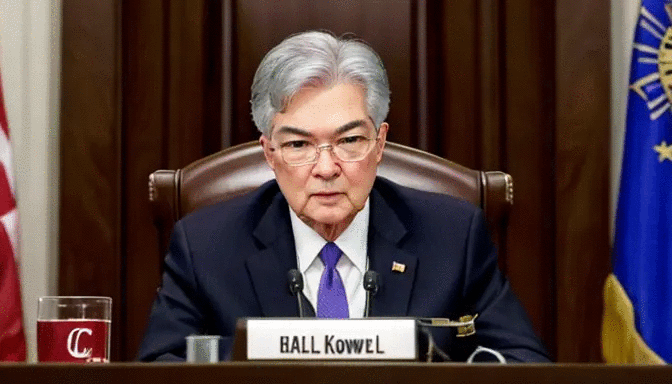Markets
Despite a rallying group of technology stocks linked to the artificial intelligence boom, the US market rally stalled to start the week, pulling the S&P 500 and Nasdaq Composite off all-time highs. This was ahead of a plethora of potentially market-moving events highlighted by Chair Powell’s speech on Capital Hill and the always-watched US Non-Farm Payroll.
The market’s rising trend, which has been propelled in recent weeks by increased optimism surrounding artificial intelligence (AI) products, may have temporarily paused after Monday’s decline. Last Friday saw the Nasdaq, which is well-known for its large proportion of technology firms, surpass a record set in 2021 and achieve a new all-time high. With this accomplishment, the Nasdaq becomes the last significant stock index to conclude at a record this year.
Nevertheless, the retreat highlights investors’ sense of policy caution as they stop for a bit.
Fed Chair Jerome Powell is likely to sound more hawkish given the ongoing inflationary pressures, supportive financial conditions, stable economic growth, and strong labor market conditions. It’s difficult to see a significant divergence from the most current advice offered by other policymakers, though.
Powell’s message, then, takes a moderate stance, stressing the value of promoting economic recovery while simultaneously recognizing the necessity of keeping an eye on inflation. A gradual and careful change in policy stance would be expected given the uncertainty surrounding the economic outlook and the possible effects of monetary policy modifications.
The prevailing over-sensitization among Federal Reserve officials is that, although the three- and six-month annualized inflation data is good, it is insufficient on its own. The inflation numbers for January, as seen by the PCE and CPI indices, provide evidence that the “last mile” toward price stability is still likely to be a bumpy one, notwithstanding the adage that one month does not establish a pattern.
The politics around rate reductions
More and more Democratic voices are calling for policy changes to deal with the ongoing high prices and inflationary pressures. Senator Sherrod Brown has underlined the necessity of finding new strategies and hinted that the conventional restrictive monetary policy might not be as successful in containing inflation as it once was. He highlighted the difficulties brought on by growing housing costs and restricted access to credit in his concerns about the effects on small businesses and working Americans.
This feeling serves as the backdrop for this week’s congressional and Senate hearings by Federal Reserve Chair Jerome Powell. Republicans in Congress are anticipated to question Powell on his views and answers as they concentrate on deficits and inflation. Powell will probably follow the proper protocol, admit that the country’s fiscal track is unsustainable, and end it there.
Powell and his associates, however, will probably stick to their guns and reiterate that no rate cuts are going to happen anytime soon. Unless there are unanticipated negative developments in the employment market or the banking sector, the Fed is unlikely to lower interest rates during the forthcoming policy meeting or in May, despite requests from the Democratic Party for action.
Oil costs
Despite early gains, oil prices fell, underscoring demand worries that overshadowed OPEC’s much-anticipated decision to prolong supply restrictions. The downward trend in oil prices indicates traders’ worry about the expansion of the world economy and possible issues that may arise from China beyond what is now anticipated. Furthermore, the possibility of persistently increasing interest rates in the US could eventually reduce demand to the point where oil prices drop significantly.
Gold rates
As long as there are geopolitical tensions throughout the world and ongoing political unrest in the US, central banks will continue to purchase bullion in large quantities. Gold prices have been greatly bolstered by central banks’ acquisitions of the metal, particularly those of China and India. Because gold-ETF holdings are already very high compared to real (inflation-adjusted) interest rates, this recent lack of ETF buying can be explained.
The 1000-ounce bars that central banks purchase are usually stored in a vault to gather dust and are not expected to be used for several decades, which might lead to a significant and long-lasting gap in the world’s physical supply.
Historically, substantial risk-off events, which are marked by a decline in risk appetite, and times of supportive monetary policy have often resulted in changes in gold ETF holdings. According to our analysis, once the Federal Reserve starts cutting interest rates—which is expected to happen as soon as June—holdings of ETFs may rise. Therefore, we are about to trade that actionable window.



















